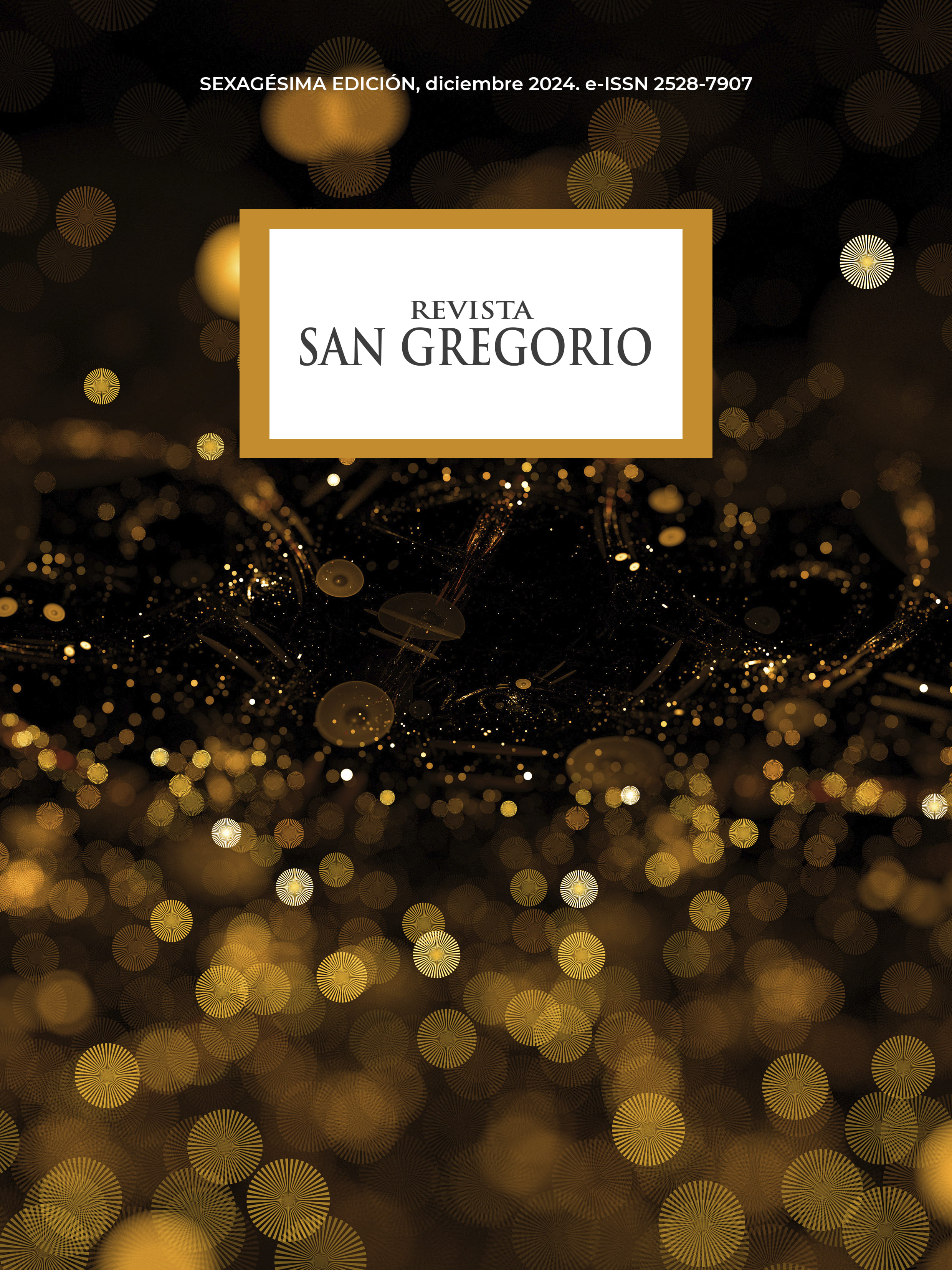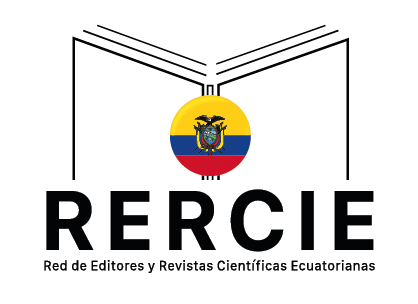El ocio turístico en la producción científica en Scopus: tendencias actuales y agenda de investigación
DOI:
https://doi.org/10.36097/rsan.v1i60.3011Palabras clave:
revisión de la literatura, indicadores bibliométricos, ocio, turismo, experiencia turísticaResumen
Esta investigación tiene como objetivo analizar la producción científica sobre ocio turístico según la base de datos Scopus para identificar las principales líneas de investigación que se han abordado. El estudio se basó en una revisión de la literatura y se llevó a cabo en tres etapas: búsqueda y procesamiento bibliométrico de la información científica; selección de artículos para el análisis de contenido y análisis de contenido de los artículos. Para el procesamiento de la información se utilizó la aplicación Biblioshiny del paquete RStudio Cloud que facilitó la visualización y exploración de los datos. Se calcularon indicadores bibliométricos para evaluar la relevancia y el impacto de las publicaciones académicas en la temática en cuestión. Como resultados se determinó que las principales líneas de investigación son el comportamiento del turista con motivación de actividades de ocio, experiencia turística de ocio y actividades de ocio basadas en modalidades turísticas o atractivos. El campo de estudio analizado no ha sido muy tratado en el ámbito de la investigación científica por lo que constituye oportunidad
Descargas
Referencias
Álvarez, J. S., & Hernández, M. Á. (2021). Revisión de los instrumentos de ocio de las tesis doctorales españolas. . Oídles. Desarrollo local y economía social, 71-84. https://www.eumed.net/uploads/articulos/4158e975e4cac40dee837173d920c662.pdf
Aria, M. & Cuccurullo, C. (2017) bibliometrix: An R-tool for comprenhensive science mapping analysis, Journal of Infometrics, 11 (4), pp 959-975, Elsevier
Asadzadeh, A., & Mousavi, M. S. (2017). The Role of Tourism on the Environment and Its Governing Law. Electronic Journal of Biology, 13(1). https://www.atlantis-press.com/article/125965379.pdf
Cheng, C. J., & Li, W. C. (2020). A study on the hot spring leisure experience and happiness of Generation X and Generation Y in Taiwan. Asia Pacific Journal of Tourism Research, 25(1), 39-51. https://doi.org/10.1080/10941665.2019.1592764
Choe, Y., Kim, J., & Fesenmaier, D. R. ( 2017). Use of Social Media across the Trip Experience: An Application of Latent Transition Analysis. Journal of Travel & Tourism Marketing, 34 (4), 431–443. https://doi.org/10.1080/10548408.2016.1182459
Cigale, D. (2011). Tourist visits of high mountains in Kamniška Bistrica area. Dela, 35, 125-143. https://doi.org/10.4312/dela.35.125-143
Cohen, E. (2015). Tourism, Leisure and Authenticity. Tourism Recreation Research, 35(1), 67–73. https://doi.org/10.1080/02508281.2010.11081620
Espejo, L. B. (1989). Educación y Ocio. Planteamientos pedagógicos para el tiempo de ocio. Pedagogía social: revista interuniversitaria, 1, 221-232. https://dialnet.unirioja.es/descarga/articulo/2713788.pdf
Faria, J. A. S., & Gomes, C. L. (2013). El ocio y el turismo en los artículos publicados en revistas académicas de turismo. Estudios y Perspectivas en Turism, 22(5), 875-892. http://www.redalyc.org/articulo.oa?id=180728713004
Figueiredo, E., Eusebio, C., & Kastenholz, E. (2012). How Diverse are Tourists with Disabilities? A Pilot Study on Accessible Leisure Tourism Experiences in Portugal. International Journal of Tourism Research, 14, 531-550. https://doi.org/10.1002/jtr.1913
Franco, E. L. (1993). El ocio. Perspectiva pedagógica. Revista compluwnse de Educación., 4(1), 69-88. https://dialnet.unirioja.es/servlet/articulo?codigo=150113
González, A. E. E. (2017). Social tourism, senior citizens, and education. World Leisure Journal, 59, 22-29. https://doi.org/10.1080/16078055.2017.1393872
Kumar, A. (2017). Cultural and Heritage Tourism: A Tool for Sustainable Development. Global Journal of Commerce & Management Perspective, 6(6), 56-59. http://dx.doi.org/10.24105/gjcmp.6.6.1709
Lazcano, I., & Madariaga, A. (2016). El valor del ocio en la sociedad actual. In La marcha nocturna:¿ Un rito exclusivamente español? (pp. 15-33). Centro Reina Sofía sobre Adolescencia y Juventud. Fundación de Ayuda contra la Drogadicción (FAD). https://dialnet.unirioja.es/descarga/articulo/6149004.pdf
Li, Y. (2000). Geographical consciousness and tourism experience. Annals of Tourism Research, 27(4), 863 - 883. https://doi.org/10.1016/S0160-7383(99)00112-7
Lorenzo-Sánchez, O., Sánchez-Gómez, M. C., Martín-Cilleros, M. V., Martín-Sevillano, R., Cabanillas-García, J. L., & Verdugo-Castro, S. (2022). Percepción sobre el ocio y tiempo libre y como ha afectado a estudiantes universitarios. New Trends in Qualitative Research, 12. https://doi.org/10.36367/ntqr.12.2022.e625
Luci, A. R. (2015). La experiencia de ocio al aire libre en contacto con la naturaleza, como vivencia restauradora de la relación ser humano-naturaleza. Revista Latinoamericana, 14(41), 499-516. http://dx.doi.org/10.4067/S0718-65682015000200029
Marinkovic, V., Dimitrovski, D., & Senic, V. (2017). Going for gold as a leisure tourism continuum: clustering motivations for gold panning revisit intention. Leisure Studies, 36(6), 764-777. https://doi.org/10.1080/02614367.2016.1250803
McFarlane, J., Grant, B., Blackwell, B., & Mounter, S. (2017). Combining amenity with experience: exploring the hidden capital of a winescape experience. Tourism Economics, 23(5), 1076-1095. https://doi.org/10.1177/1354816616665754
Miranda, G. (2006). El tiempo libre y ocio reivindicado por los trabajadores. Pasos, 4, 301-326. http://www.pasosonline.org/Publicados/4306/PASOS09.pdf#page=25
Mosquera, P. R. S., Bolaños, D. I. S., & Cárdenas, H. A. P. ( 2017). Diagnosis of physical activity level and hiking in Sangolquí: Study by age range. Revista Cubana de Investigaciones Biomedicas, 36(3). https://www.scopus.com/inward/record.uri?eid=2-s2.0-85044471959&partnerID=40&md5=280689d9438f82bc628c7c8433f21902
Navratil, J., Krejci, T., Martinat, S., Pasqualetti, M. J., Klusacek, P., Frantal, B., & Tochackova, K. (2018).Brownfields do not “only live twice”: The possibilities for heritage preservation and the enlargement of leisure time activities in Brno, the Czech Republic. Cities, 7452-63. https://doi.org/10.1016/j.cities.2017.11.003
Negre, T. D., Hernández, J. M., & Gil, S. M. (2018). Understanding tourists’ leisure expenditure at the destination: a social network analysis. Journal of Travel and Tourism Marketing, 35(7), 922-937. https://doi.org/10.1080/10548408.2018.1447533
Páez, J. D., & Alonso, C. Q. (2016). Urban geoturism rutes in icod de los vinos (Tenerife, Canary Islands, Spain): A proposal. Cuadernos Geograficos, 55(2), 320-343. https://www.scopus.com/inward/record.uri?eid=2-s2.0-85007440026&partnerID=40&md5=22336ba8fcbb3334164b40f637e954ef
Qin, S., Man, J., Wan, X., Li, C., Dong, H., & Ge, X. (2019). Applying Big Data Analytics to Monitor Tourist Flow for the Scenic Area Operation Management. Discrete Dynamics in Nature and Society. https://doi.org/10.1155/2019/8239047
Rowinski, R., Adamowicz, N. M., Slodownik, A. O., Dąbrowski, A., & Geigle, P. R. (2017). Participation in leisure activities and tourism among older people with and without disabilities in Poland. Archives of Gerontology and Geriatrics, 73, 82-88. https://doi.org/10.1016/j.archger.2017.07.025
Sandoval, N. (2017). Diagnóstico acerca del uso del ocio y el tiempo libre entre los estudiantes la universidad nacional experimental del Táchira. Journal of Research in Social Pedagogy, 30, 169-188. https://doi.org/10. SE7179/PSRI_2017.30.12
Shuai, M., Liu, C., Ahmed, F., & Wang, R. (2022). Analysis on the change of tourists' leisure agricultural tourism behavior and the influence of individual intrinsic characteristics. Asia Pacific Management Review, 27(2), 115-119. https://doi.org/10.1016/j.apmrv.2021.06.001
Tunbridge, J. (2002). Large heritage waterfronts on small tourist Islands: The case of the Royal Naval Dockyard, Bermuda. International Journal of Heritage Studies, 8(1), 41-51. https://doi.org/10.1080/13527250220119929
Woodside, A. G., & D.Martin. (2008). Applying ecological systems and micro-tipping point theory for understanding tourists' leisure destination behavior. Journal of Travel Research, 47, 14-24. https://doi.org/10.1177/0047287507312432
Xu, Y., Zhang, H., Lu, L., & Zha, X. (2020). Cultural Tourists’ Satisfaction from a Leisure Experience Perspective: An Empirical Study in China. Journal of China Tourism Research, 16(3), 368-390. https://doi.org/10.1080/19388160.2019.1627969
Yu, G. B., Sirgy, M. J., & Bosnjak, M. (2021). The Effects of Holiday Leisure Travel on Subjective Well-Being: The Moderating Role of Experience Sharing. Journal of Travel Research, 60(8), 1677 -1691. https://doi.org/10.1177/0047287520966381
Zaragoza, M. P. P., Curz, M. S., Mujica, J. D., Castellano, J. M. P., & Ojeda, A. Á. R. (2023). Los patrones de comportamiento de la población de Canarias en relación con las actividades de ocio turístico en el contexto postcovid -19. Geografía: Cambios Retos y Adaptación, 713-723. https://doi.org/10.21138/CGE/2023.lc
Descargas
Publicado
Número
Sección
Licencia
Derechos de autor 2024 Brenda-Roxana Durán-Camejo, José-Antonio Rivera-Vázquez, Beatriz Serrano-Leyva, Osvaldo Batista-Pérez

Esta obra está bajo una licencia internacional Creative Commons Atribución-NoComercial-SinDerivadas 4.0.















